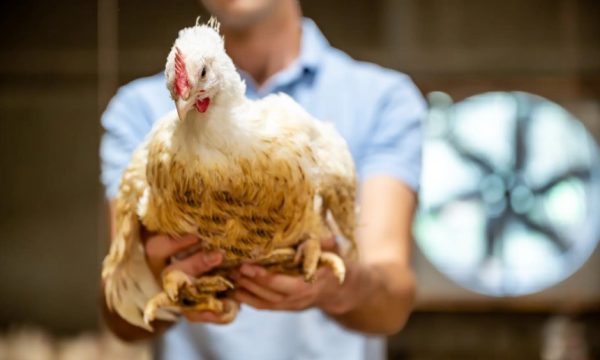Press release Improved methodology for detection of antibiotic residues in milk and meat

ILVO and Ghent University have set up an analytical method for antibiotic residues in milk and meat matrices that are faster, cheaper, and at least as easy and reliable than what already exists. In his doctoral study on the subject, ILVO researcher Geert Van Royen achieved remarkable results mainly in the purification phase: he developed a purification with 'pre-programmed' polymers (molecularly imprinted polymers of MIPs). “This is an important stepping-stone towards an antibioticasensor, which could perform all analysis phases at once, and that could report immediately on the concentrations of residual antibiotics.” Now that everyone feels the need to reduce the use of antibiotics in humans and animals, it is important to be able to deploy powerful and highly affordable measuring instruments.
Two crucial antibiotic families
Because Belgian monitoring programmes show that the most-used antibiotic families are ‘beta-lactams' and 'fluoroquinolones', the research focused on these families and an analytical method was developed for the substances benzylpenicillin and enrofloxacin. This strategy fits in perfectly with the findings of the World Health Organisation: their ranking based on the importance of antimicrobials in human medicine shows that both antibiotic families are crucial. AMCRA, the Belgian knowledge center for antibiotic use and resistance in animals, recently pointed to the coherence of the reduction of antibiotic use and -resistance. They point out that the decrease in the animal use of the consciously crucially important antibiotics since 2011 is accompanied by a reduction in the prevention of antibiotic resistance. However, resistance to commonly-used antibiotics in animal production has remained unchanged since 2011.
Maximum Residue Limits
Maximum residue limits or MRLs indicate the maximum permitted level of antimicrobial substances which may be present in different foodstuffs. It is therefore important to have sensitive and specific analytical methods that can accurately, efficiently and quickly determine whether the MRL is not exceeded so that its conformity can be verified with the legislation. Geert Van Royen: "There are already methods with the same sensitivity and specificity, but they are much more expensive and take months to perform, while our analytical method only takes a few hours to detect antibiotic residues."
There are already methods with the same sensitivity and specificity, but they are much more expensive and take months to perform, while our analytical method only takes a few hours to detect antibiotic residues.
The newly developed specific purification method has been validated and consists of a number of different steps, of which purification is the most important. Through purification a certain molecule is isolated so that you get a higher concentration of it. This makes it easier to measure these quantitatively.
A sensor?
Opportunities are now appearing on the horizon to apply this detection method on a miniaturized scale and in an integrated way. At the moment the purification is done on- site, but the detection itself has to be through mass spectrometry in a specialized lab. Geert Van Royen: "If we can place the discharge and the detection on the same suit, e.g. in a sensor, the concentration present can be determined immediately. This will be explored further in follow-up research.
If we can place the discharge and the detection on the same suit, e.g. in a sensor, the concentration present can be determined immediately. This will be explored further in follow-up research.


